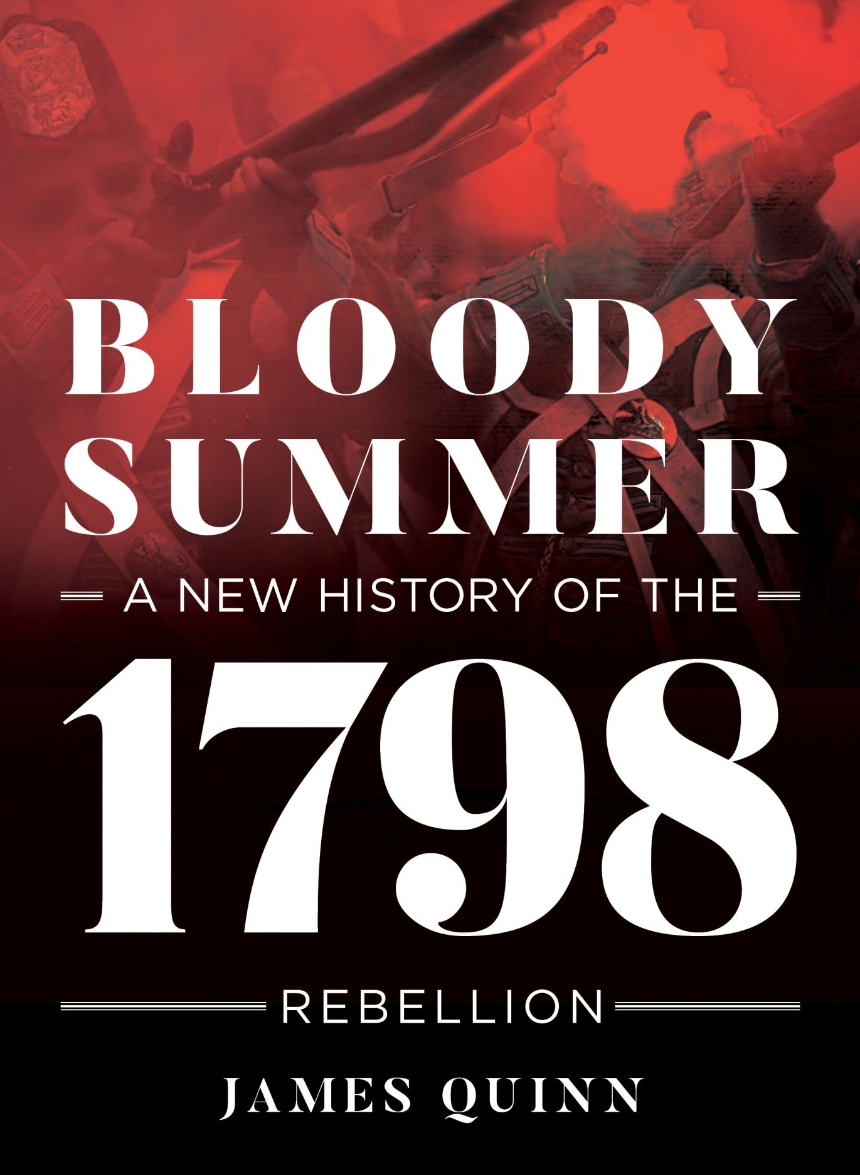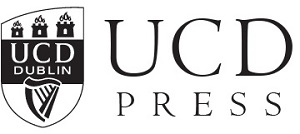A new perspective on the key battles, underlying factors, and lasting impact of the 1798 Rebellion, written by a leading Irish historian.
The 1798 Rebellion was one of the bloodiest events in Irish history. Thousands of people were slaughtered in a single summer in a massive popular uprising against British rule. Thousands more were seriously injured and traumatised by the horrific violence they witnessed. Significant disturbances involved more than half of Ireland’s counties, and the number of insurgents—upwards of 100,000—dwarfed those who fought in later national uprisings.
Today, we still live with the ideological and practical consequences of the rebellion. This was the bloody climax of a decade of radicalism and reaction that saw the emergence of new forms of militant republicanism and popular loyalism that strongly influenced the course of Irish history. It was inspired by a desire to unite Ireland’s political and religious factions, but in the end, it drove them further apart. The rebellion sought to secure Ireland’s independence, but instead led directly to an Act of Union with Great Britain that determined the course of Anglo-Irish relations for two centuries.
French and American revolutionary ideas were deeply embedded in this movement, and the impact of 1798 reached far beyond Irish waters. The flight, exile, and banishment of thousands of Irish people abroad ensured that its ripple effects were felt on the European continent and throughout the English-speaking world, in Britain, North America, and Australia.
Bloody Summer is a fresh and comprehensive exploration of the rebellion that seeks to answer the question of not just what happened in 1798, but why it happened, and demonstrates a new, compelling account of this seismic event in Irish history.
The 1798 Rebellion was one of the bloodiest events in Irish history. Thousands of people were slaughtered in a single summer in a massive popular uprising against British rule. Thousands more were seriously injured and traumatised by the horrific violence they witnessed. Significant disturbances involved more than half of Ireland’s counties, and the number of insurgents—upwards of 100,000—dwarfed those who fought in later national uprisings.
Today, we still live with the ideological and practical consequences of the rebellion. This was the bloody climax of a decade of radicalism and reaction that saw the emergence of new forms of militant republicanism and popular loyalism that strongly influenced the course of Irish history. It was inspired by a desire to unite Ireland’s political and religious factions, but in the end, it drove them further apart. The rebellion sought to secure Ireland’s independence, but instead led directly to an Act of Union with Great Britain that determined the course of Anglo-Irish relations for two centuries.
French and American revolutionary ideas were deeply embedded in this movement, and the impact of 1798 reached far beyond Irish waters. The flight, exile, and banishment of thousands of Irish people abroad ensured that its ripple effects were felt on the European continent and throughout the English-speaking world, in Britain, North America, and Australia.
Bloody Summer is a fresh and comprehensive exploration of the rebellion that seeks to answer the question of not just what happened in 1798, but why it happened, and demonstrates a new, compelling account of this seismic event in Irish history.
Table of Contents
1. Ireland in the Eighteenth Century: provides the general eighteenth-century background,
focusing on topics such as the effect of the penal laws on Catholics and Protestant Dissenters,
and the relevant social, economic and political developments in Ireland up to the 1770s.
2. Revolutions and Republics: America and France, 1775–92: discusses the impact on
Ireland of the American and French revolutions and how they brought new strains and
ideological influences to bear on an already divided society.
3. War, Conspiracy and Counter-Revolution, 1793–8: details the growing polarisation
and violence that occurred throughout the country after the outbreak of war with
revolutionary France in 1793 and brings the narrative up to the eve of the outbreak of
open rebellion in May 1798.
4. Rebellion in Leinster: May-June 1798: describes the outbreak of rebellion in eastern
counties and its progress up to the crucial rebel defeats at New Ross (5 June) and Arklow
(9 June). Examines events in detail in Wexford, where the rebellion was at its most
intense, but does not neglect the significant outbreaks of violence in Wicklow, Kildare,
Carlow, Meath and Dublin.
5. Rebellion in Ulster, Leinster and Munster: June–July 1798: describes events in
Ulster, particularly the key battles of Antrim (7 June) and Ballynahinch (13 June), and
the various ways in which the northern rebellion differed from that elsewhere. Returns to
examine the final weeks of the fighting in the south-east, notably the rebel defeat at
Vinegar Hill (21 June). Examines why significant levels of United Irish support in
Munster did not result in armed outbreaks on the same scale as Leinster and Ulster.
6. Rebellion in Connacht: August–September 1798: deals with the rebellion in the west
sparked by the arrival of the French fleet at Killala on 22 August and examines how a
variety of local factors gave it a different character to the outbreaks in Leinster and
Ulster. Describes the French march through Connacht led by General Humbert and the
defeat of all three French expeditions in September and October 1798.
7. Aftermath: 1798–1803: details the immediate aftermath of the rebellion, particularly the
widespread lawlessness that existed until the spring of 1799, and the efforts of the British
government to use the rebellion to force through a legislative union with the United
Kingdom. Since the roots of Robert Emmet’s 1803 insurrection lay in 1798, it includes a
brief account of this.
8. Causes: examines the interaction of political, sectarian, social, economic and
international factors that led to the outbreak of the rebellion. Distinguishes between long-
term and short-term factors and analyses how the different pressures in different parts of
the country influenced the shape and progress of the rebellion.
9. Consequences: details the immediate and longer-term historical consequences, including
the massive loss of human life, and the vast amount of human suffering, including sexual
violence and mass dislocation. Examines the manner in which the rebellion aggravated
political and sectarian differences and discredited the use of political violence for many
for at least a generation. The global ramifications of the rebellion caused by the mass
3
influx of Irish political refugees to France, Britain, the USA, Canada and Australia are
also examined.
10. Representations: gives an overview of the historiography of the rebellion and describes
the way in which many of its battles have been fought over and over again in print (and
also in song, drama and film). Examines how its aims and actions have been endlessly
revised and contested throughout the island over the last 225 years and how these
varying interpretations shed light on contemporary politics and attitudes, up to the
present day.
focusing on topics such as the effect of the penal laws on Catholics and Protestant Dissenters,
and the relevant social, economic and political developments in Ireland up to the 1770s.
2. Revolutions and Republics: America and France, 1775–92: discusses the impact on
Ireland of the American and French revolutions and how they brought new strains and
ideological influences to bear on an already divided society.
3. War, Conspiracy and Counter-Revolution, 1793–8: details the growing polarisation
and violence that occurred throughout the country after the outbreak of war with
revolutionary France in 1793 and brings the narrative up to the eve of the outbreak of
open rebellion in May 1798.
4. Rebellion in Leinster: May-June 1798: describes the outbreak of rebellion in eastern
counties and its progress up to the crucial rebel defeats at New Ross (5 June) and Arklow
(9 June). Examines events in detail in Wexford, where the rebellion was at its most
intense, but does not neglect the significant outbreaks of violence in Wicklow, Kildare,
Carlow, Meath and Dublin.
5. Rebellion in Ulster, Leinster and Munster: June–July 1798: describes events in
Ulster, particularly the key battles of Antrim (7 June) and Ballynahinch (13 June), and
the various ways in which the northern rebellion differed from that elsewhere. Returns to
examine the final weeks of the fighting in the south-east, notably the rebel defeat at
Vinegar Hill (21 June). Examines why significant levels of United Irish support in
Munster did not result in armed outbreaks on the same scale as Leinster and Ulster.
6. Rebellion in Connacht: August–September 1798: deals with the rebellion in the west
sparked by the arrival of the French fleet at Killala on 22 August and examines how a
variety of local factors gave it a different character to the outbreaks in Leinster and
Ulster. Describes the French march through Connacht led by General Humbert and the
defeat of all three French expeditions in September and October 1798.
7. Aftermath: 1798–1803: details the immediate aftermath of the rebellion, particularly the
widespread lawlessness that existed until the spring of 1799, and the efforts of the British
government to use the rebellion to force through a legislative union with the United
Kingdom. Since the roots of Robert Emmet’s 1803 insurrection lay in 1798, it includes a
brief account of this.
8. Causes: examines the interaction of political, sectarian, social, economic and
international factors that led to the outbreak of the rebellion. Distinguishes between long-
term and short-term factors and analyses how the different pressures in different parts of
the country influenced the shape and progress of the rebellion.
9. Consequences: details the immediate and longer-term historical consequences, including
the massive loss of human life, and the vast amount of human suffering, including sexual
violence and mass dislocation. Examines the manner in which the rebellion aggravated
political and sectarian differences and discredited the use of political violence for many
for at least a generation. The global ramifications of the rebellion caused by the mass
3
influx of Irish political refugees to France, Britain, the USA, Canada and Australia are
also examined.
10. Representations: gives an overview of the historiography of the rebellion and describes
the way in which many of its battles have been fought over and over again in print (and
also in song, drama and film). Examines how its aims and actions have been endlessly
revised and contested throughout the island over the last 225 years and how these
varying interpretations shed light on contemporary politics and attitudes, up to the
present day.

